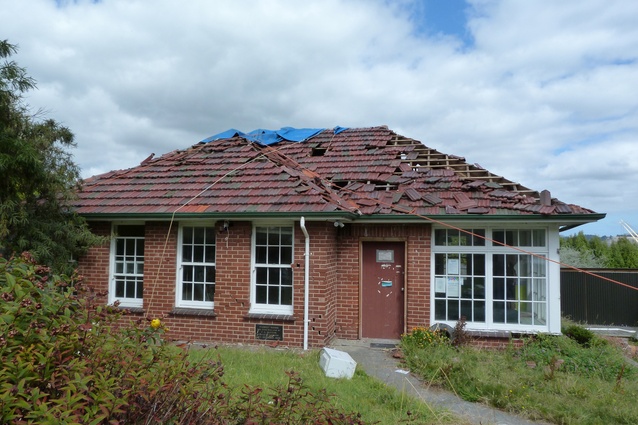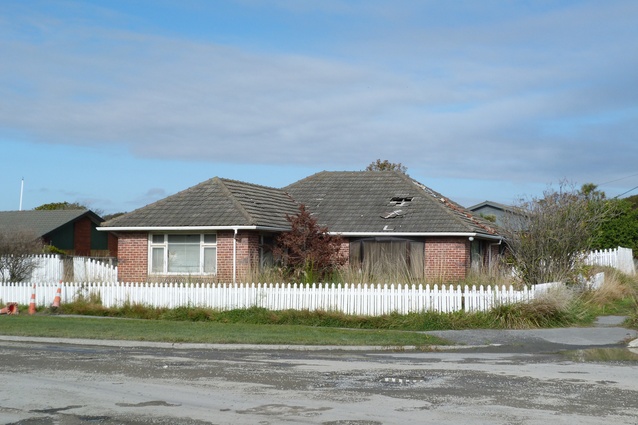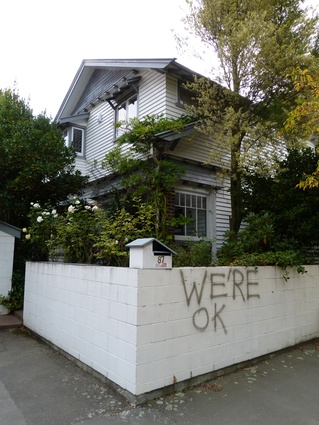ECQ repair strategy
As the Christchurch rebuild gathers momentum industry professionals are worried substandard assessments of quake-damaged houses are a ticking time bomb akin to the leaky building saga.
Add in growing dissatisfaction with the Fletcher EQR contracting system, and the picture is an unhappy one.
Architects, builders, engineers and homeowners are not short of horror stories about serious earthquake damage missed in EQC assessments. Take the resident told to move out for six weeks while his large tilt slab house underwent cosmetic repairs.
Dubious about the thoroughness of the EQC inspection, he acted on the advice of builder friend Daryl Hewitt and asked an architect to take laser levels. They revealed sections of the house had dropped by more than 60 mm, something confirmed by a further $7000 worth of sophisticated testing. The ridge in the lounge, dismissed by the EQC assessor as “carpet bunching,” was where the thick concrete slab foundation had split.
Hewitt has personally checked about 100 homes for clients. Eight of those destined for superficial “scrape, stop and paint” fixes turned into rebuilds, and others were later found to need more extensive repairs. “A lot of those are coming down now too.” Almost two years after the first major quake struck Canterbury, the bulk of repair work is yet to be done on more than 80,000 homes.
That’s all the more reason to get the system sorted says Dave Sturman, a building consultant and southern chapter president of the New Zealand Institute of Building. He warns that failure to uncover the true extent of residential damage means Christchurch faces a potential “earthquake pandemic” in years to come.
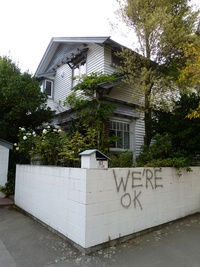
Fletcher EQR is managing repairs for residential properties that come in under the EQC cap of $100,000 plus GST and trumpets the fact that it is completing work on about 100 homes a day.
Sturman worries there is too much emphasis on speed and cost-cutting and not enough emphasis on quality, so minor tell-tale signs that could point to major issues are overlooked. By way of example he says painters are being appointed as principal contractors on repair jobs (something EQR says is very unlikely) when they are the least qualified of all tradesmen.
“I’ll give you a simple scenario,” says Sturman. “A painter is painting a room and he comes to an almighty bulge in the skirting. He wouldn’t have a clue why that bulge has occurred, whereas a builder would say, ‘gee we’d better take that skirting off, there’s been damage here,’ and all of a sudden you find that the studs and bottom plate have parted from one another which have issues around structural loads, so minor ailments lead to major stuff.”
Engineer Warren Lewis agrees inexperienced assessors are missing signs of damage. “Ripped paint” on weatherboards is evidence of racking which causes nails to “slot” gib board so it loses strength. That damage is then exacerbated by strong winds and continued earth tremors. Owners of a house scheduled for cosmetic EQC repairs called him because they were anxious about the way it lurched in the wind post-quake and weatherboards removed for work on an extension revealed widespread slotting of wall board.
“So I calculated how much gib board we needed to brace the house and it was about twice the amount they had.” Lewis says cracking of plaster around the first floor level of multi-storey homes warrants a closer look. “You’ve got to take the thing apart and investigate it. You don’t just scrape, stop and paint which seems to be the favoured thing with EQC.”
At a hill home the nozzle of a hose lying on a first floor deck was found jammed under nearby weatherboards and Hill says this was the only initial sign that the 2G of vertical acceleration exerted by the quake had lifted the upper level off the ground floor. The true extent of the damage was revealed when the owners removed gib inside. “The nails holding the top floor to the bottom floor had all come out and when it came down, all the nails were bent over … there was nothing to stop the top floor sliding off,” says Lewis.
Christchurch architect Colin Hill was involved in formulating changes to bracing standards and he is far from satisfied with the current residential inspection and repair regime. Since the late 1970s he says homes have relied heavily on wallboard as a bracing element, but the quakes stressed essential hold down fixings required to transfer the load to the floor and foundations. These fixings are hidden, so they need to be opened up, and replaced or re-fixed, says Hill.

Failure to do this means weakened houses are no longer code compliant. This could potentially lead to significant structural failures causing loss of life, particularly in homes with heavy concrete tile roofs and brick chimneys removed to roof or ceiling level. EQC, EQR and PMOs are not addressing the problem he says and there are numerous cases of cracks opening up again after cosmetic fixes.
“It’s similar to those makeover programmes that featured on TV a few years ago: a quick fix that looks good on the day but fails again the next week or under close scrutiny.” EQC national operations manager Reid Stiven responded to Progressive Building questions via email through a communications person. He defended EQC’s standards and says laser, zip or pneumatic levels and spirit levels are used “as needed” in inspections.
Just over 1300 properties have been partially or fully re-inspected for damage but he could not say with any certainty how many went over cap as a result. “Our best estimate is between 20 and 120 properties.” There would have to be good reason for more invasive checks such as removing wall linings, says Stiven, “particularly as cracking in wall linings is usually due to improper installation.
“This is not an indicator that wall lining should be removed to check for structural damage and we don’t do additional damage where it’s not warranted.” Stiven adds that if homeowners choose to strip wall linings, they have to meet the cost of reinstatement if no earthquake damage is found.
BRANZ principal structural engineer Graeme Beattie is aware of criticism that EQC is “a bit blasé” in its approach to some repairs and says his organisation is trying to help EQR get an understanding of what to look for and what to do in terms of repairs.
But Beattie says houses differ so much that “it’s pretty hard to have a nice clean crisp guide that says ‘you see this, you do that’.” He has inspected many damaged Christchurch homes and says larger hill properties that step down slopes and have large open plan areas often fared worse than traditional box or L-shaped homes on the flat.
Which is why architect John Chaplin believes it is vital that anyone scoping repairs to these more complicated dwellings has architectural building experience and checks the original drawings to identify the location of structural steel beams.
“In a lot of cases these are fixed with coach bolts and screws into timber and if a wall racks, those bolts loosen and that’s a significant weakness.” Concrete slabs poured on gravel “tailings” are another area of concern because the stones settled in some places, leaving voids under floors which now sound “drummy”. Chaplin says the leaky homes issue is rearing its head because some homes will go through three winters before repairs are done, and that long delay is causing further damage as rain gets in.
Just over 200 “leaky homes” registered with the Weathertight Homes resolution service pre-quakes are the subject of EQC claims. EQC offers cash settlements for such properties based on the average cost of replacing or repairing earthquake damaged parts of an equivalent weathertight home.
Chaplin, who is a quality assurance reviewer for the Weathertight Homes Tribunal, says that is a sensible approach. But determining whether a home is “leaky” or just quake-damaged could be open to dispute, and he points out the definition of a leaky home also covers defects that could be capable of leaking in the future.
“Now there are thousands of earthquake damaged homes that are leaking like sieves, and are slowly deteriorating into major leaky homes with large consequential damage.” Management of the repair process is also under attack and a Christchurch company has laid a complaint with the Commerce Commission accusing EQC and EQR of price fixing and anti-competitive behaviour. Fix It Building Services has done repairs for 150 householders who opted out of the EQR system.
Managing director Russell Poole says EQC makes opting out unnecessarily complicated and some homeowners are scared off by the prospect of having to pay contractors themselves if EQC reimbursement cheques are slow to arrive. “There’s an awful lot they don’t pay on time, so for the homeowner that’s not viable. We’re not asking homeowners to pay, we’re waiting for the money to come through, but small contractors would struggle to fund that cash flow difference. They need to have about $250,000 of funding available … that’s the amount we’d have in the system [waiting] for payment from EQC on any given day.”
Poole says his complaint also covered the lack of a proper disputes process for damage assessments. However, EQC says a mediation service provided by the Arbitrators’ and Mediators’ Institute will be launched in August and expects it to deal with between five and 10 cases a week. EQC will pay for mediation and if the customer agrees with the mediator’s decision it will be binding. EQR’s pricing policy is another major bone of contention.
A June memo to EQR contractors listed 11 preliminary and general (P&G) costs as no longer claimable. They included vehicle expenses, health and safety, and office and administration costs. The memo went on to say the contractor’s margin had to be included within the unit rate. EQR says some contractors are finding the ‘business as usual’ costs standard for good business these days are more than they wish to absorb, but “those companies who have invested in their own future as regards these system costs are finding the work profitable”.
This is disputed by a builder who describes Fletcher EQR as the most bullying outfit he has ever worked for. “Good businesses charge out what a job costs … it is a play on words to say costs are absorbed. What they really mean is ‘do them for nothing or go away’.”
He says the edict on margins had a huge impact. “We used to write down our material cost, then add a margin of 7.5 percent. That memo now says the margin will be shown in the costs.
“Do you think Winstones will sell me gib board 7.5 percent cheaper or PlaceMakers [will sell me] a tin of paint cheaper? No, of course not. Therefore this really means ‘Mr Builder you will give us a 7.5 percent reduction on every job’.”
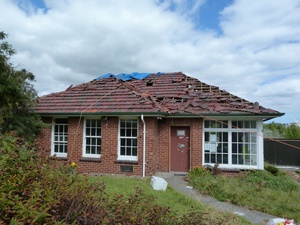
Like most of the builders interviewed for this story he declined to be named for fear of being blacklisted by EQR or insurance company PMOs. (Until several months ago EQR contracts expressly forbade builders talking to the media, and they now have a standard confidentiality clause banning discussion of projects with other parties.)
And like many builders I talked to he is avoiding EQR work, focusing instead on opt out jobs and work for insurance companies. Carl Taylor, owner of Carl Taylor Homes, was one of the first contractors employed by EQR in 2010, but quit six months ago to set up Rebuild Me, a company specialising in opt out quake repairs. “[With EQR] the amount of paperwork is absolutely ridiculous.
“We have no problem doing normal paperwork but this is out of control and it slows the jobs down.” So far only 1800 homeowners have opted out of the EQR queue, but Taylor says enquiries are growing as people get sick of waiting. He employs 39 staff and about 150 contractors, and his phone is running hot with calls from industry colleagues wanting to work for him so they too can quit EQR.
“Many of them are relatively well known local contractors. The good guys are leaving.” Dave Sturman believes EQR is being unreasonable and says its “formulaic, tick box system” doesn’t work in a residential context. “They don’t take economies of scale into account. A builder’s fixed cost of business for doing a small job is far greater than it is over a large job where it can be spread.”
And if the exodus of tradespeople from EQR continues, Sturman fears the owners of quake-damaged homes will be the real losers.
“The consequence of that is that people needing work done by Fletchers will be getting the dregs of the builders out there.”

